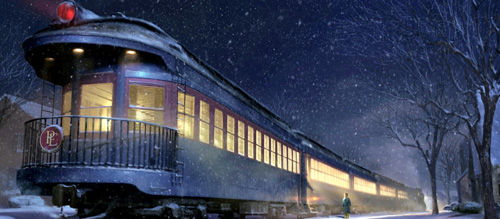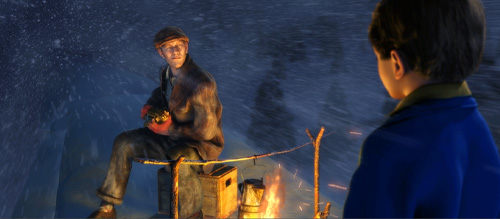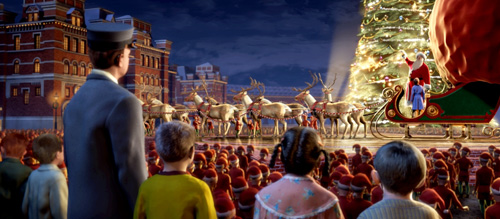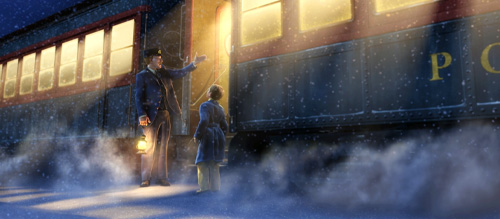The Polar Express (2004) Review
The Polar Express (2004)
Director: Robert Zemeckis
Screenwriters: Robert Zemeckis, William Broyles Jr.
Starring: Daryl Sabara, Tom Hanks, Eddie Deezen, Michael Jeter, Josh Hutcherson, Nona Gaye
Christmas movies are divisive. With twinkling lights, heaps of snow, grand orchestral scores, and child-like wonder found in most, it should be fairly obvious what makes a hit holiday flick. And yet people still seem to spend as much time arguing over whether Die Hard counts as a Christmas movie as they do actually watching it, and few festive films are quite as divisive as Robert Zemeckis’s 2004 animation The Polar Express.
Considered a seasonal classic by some and creepy nonsense by others, the film splits critical opinion and garners a 56% approval rating on Rotten Tomatoes. While many writers at the time called it ‘lifeless,’ ‘soulless,’ and ‘dead-eyed,’ acclaimed film critic Roger Ebert praised the story’s depth and tone. In particular, he pointed to Zemeckis’s faithfulness to the narrative and art style found in Chris van Allsburg’s 1985 book that served as the film’s inspiration.
This distinctive style is evident from the very start. The Polar Express opens on Christmas Eve as the Hero Boy (Daryl Sabara) lies awake in his bed. His belief in Santa has waned over the years but, as the voice-over narrator reveals, he longs to hear the ringing bells of the jolly gift-giver’s sleigh. Suddenly, he is jolted out of bed by a blaring train whistle outside his window. He throws a housecoat on over his pyjamas and tears down the stairs. A mighty locomotive is waiting in his quiet suburban street and the Conductor (Tom Hanks) invites the boy aboard the Polar Express heading to the North Pole on a tight schedule.
Sharing fantasy and adventure genre conventions, the film creates a sense of enchanting holiday spirit and keeps us on the edge of our seats throughout the train’s long journey north. We can’t help but marvel at the dancing waiters who pour steaming cups of hot chocolate for the young passengers. However, our stomachs might turn at the succession of POV shots that simulate a roller coaster ride as the train barrels towards a frozen lake.
The advanced CG animation brings each scene to life. The detailed rendering on the locomotive adds texture to the rusty steel exterior with a warm beam emanating from the headlight and rich smoke billowing from the chimney, overall giving the train a powerful presence onscreen. The animation’s surprising realism for its age adds real danger to the ice cracking underfoot and you can almost taste the hot cocoa for yourself.

Despite this, what most audiences have criticized since the film’s release is the creepiness of the animated characters. Their stiff, lifeless movements and waxy facial expressions are uncomfortable to watch. In an article for NPR, Alva Noë quotes author Lawrence Weschler who explains that when something is ‘almost completely human, the slightest variance, the 1 percent that’s not quite right’ makes it creepy. This phenomenon is often referred to as the ‘uncanny valley’ between obvious cartoonish animation and real life, and many critics and movie fans cite The Polar Express as their main example.
This uneasy effect may be in part due to the film’s unique production. It is the first movie filmed completely with motion-capture technology, which means that the actors (wearing tracking devices) performed each scene in a soundstage and the animators drew on top of their movements. Tom Hanks also famously portrayed five characters in the film, and audiences can see his body language and hear his distinctive voice in each one, which gives the characters an odd surreality.
However, the uncanny characters alone don’t make this film eerie; The Polar Express is otherwise peppered with disturbing narrative situations and imagery. At the start of the train’s journey to the North Pole, the Conductor gives a unique golden ticket to each child onboard. But one of the young passengers, the Hero Girl (Nona Gaye), loses her ticket and is escorted from the car. Fearing that she’ll be thrown off the train, the Hero Boy finds her ticket and chases after the Conductor, who appears to have taken the girl onto the roof. Outside in the wind and blowing snow, the boy meets a homeless man, Hobo (Hanks), who has set up camp with a small fire.
The sarcastic, wheezing traveller offers the boy a cup of sludgy Joe and baits him into revealing if he really believes in Santa Claus, which the child struggles to answer. The Hobo decides to lead him to the Hero Girl, but before departing, says, ‘Seeing is believing, am I right?’ When the boy asks if this is all a dream, the man replies, ‘You said it, kid, not me.’ This ambiguous existential conversation looms large over the entire narrative as we, along with the protagonist, are unsure what is real and what is fantasy. The scene is made all the more unsettling by the dark blizzard enveloping the train and the slow, minor-key score.

The story even toys with the existence of ghosts. Later, after the train crashes into the frozen lake and skids across the surface, the Hobo grabs the Hero Boy by his housecoat and saves him, the Conductor, and the Hero Girl from flying off the locomotive. When the boy looks back at his saviour, the man dissolves into snow flurries. This confirms that either this journey is a dream or the Hobo is a ghost. Afterwards, on their way back to the other passengers, the protagonists pass through an abandoned car that’s home to discarded toys. Nothing is creepier than hundreds of broken puppets and dolls hanging suspended in mid-air. But then, an Ebenezer Scrooge marionette comes to life and torments the young boy.
This small reference to another popular Yuletide fairytale points to the story’s overarching debt to “A Christmas Carol” and its myriad of film adaptations. Though most people can agree that The Polar Express is creepy on many levels, this is not unusual to the genre. Dickens’s story revolves around Scrooge’s encounters with the Ghosts of Christmas Past, Present, and Future. It also deals with morbid and disturbing themes and imagery, including Scrooge’s haunting by his former business partner, Jacob Marley, and the possible future death of Tiny Tim. (It’s also interesting to note that Zemeckis went on to direct an animated adaptation of “A Christmas Carol” for Disney five years later.) The Polar Express is simply carrying on a long-standing tradition of deep, dark, and sometimes creepy themes in holiday narratives.
In Dickens’s tale and many others, however, all representations of a happy Christmas are filled with warm light, good food, loved ones, laughter, and the magic of the holidays. So, it comes as a surprise when the Polar Express arrives at the North Pole and the creepiness continues. Soon after their arrival, the Hero Boy, Hero Girl, and their new friend, Billy the Lonely Boy (Jimmy Bennett), get lost in the streets and workshops of Santa’s village. It’s a ghost town with no one in sight and a muffled, distorted record plays crooner Christmas classics over the loud speaker. The children eventually happen upon a few elves deciding the fate of a ‘naughty’ boy who put gum in his sister’s hair. Strangely, instead of being cute or jolly, the elves have severe features, raspy voices, and thick Brooklyn accents. The whole scene is rather unnerving, and the magic of Christmas isn’t restored until our hero finally meets Santa Claus.

The problem with The Polar Express isn’t that the character animation is waxy and uncanny or that the film leans too heavily on disturbing themes. The filmmakers did their best with the technology at their disposal and the story provides a depth and uneasy whimsy that is characteristic of the genre and rewards an active audience. The problem is that the narrative arc spends too long in the liminal space between joy and fear, fantasy and reality, before any sort of resolution. By the time the warmth, light, joy, and magic of Christmas is restored at the end of the film, we’ve been pulled through so much darkness that the ending hardly feels satisfying and the creepiness lingers.
Zemeckis and his team should be commended for their experimental animation and for telling a unique story that pulls us in and won’t let go. Despite its critics, the film still inspires hundreds of people to flock to cinemas every year for a Christmas Eve screening. In the sugar-coated smorgasbord of holiday movies to choose from, this film stands out as a special story about what it means to believe in something, whether you can see it or not. But fair warning that it might give you nightmares. I, like most audiences, am still divided on whether that’s what Christmas is all about.
Score: 15/24
Written by Emily Nighman


